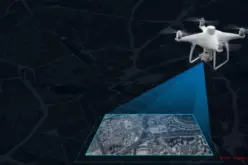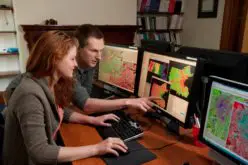How GIS Can Impact Major Console Releases?

The video game industry is worth more than any other entertainment history.
It is worth more than television, more than the film industry and more than the music industry. People turned to video games for solace in 2020, as people found themselves confined to their homes and cinemas cancelled blockbuster releases. Variety suggests that by 2023, in just two years, the industry will be worth $200bn (₹14tn), up from $120bn (₹8.7tn) in 2017.
With that increased revenue comes a higher expectation for quality titles that offer sprawling, immersive worlds for players to explore. Some developers go with fictional locations, even using them across several titles. Grand Theft Auto San Andreas dropped in 2004, but gamers had to wait almost a decade to revisit the area, with GTA V also set in the fictionalized version of Los Angeles. San Andreas is a vast city boasting a race track, golf course, tennis courts and, as Gala Casino explains, a fully functional gaming establishment with table games and online slots. Creating such a world is a massive undertaking, and developers Rockstar often adapted previous games for new games. The next GTA is believed to take place in Vice City, the same location as a 2002 release, whilst Red Dead Redemption 2 incorporated elements of the map from the 2010 original.
What does this have to do with GIS technology?
As the technology evolves, mapping complex real-life locations and converting that to an explorable environment has apparent benefits for game developers, perhaps more so in the online sector. Think for a moment about the recent release Watchdogs: Legion. It took place in London and featured many popular locations such as Piccadilly Circus, Trafalgar Square and the Houses of Parliament. These are actual location with side streets and little nuances that the game could not hope to incorporate. You can already download and explore a 3D city model of Berlin. Why not incorporate that into a video game hosted online? It is clear the technology is aligning, even if the theory and practice have not quite come together. In the future, using GIS technology, it could be possible to map whole cities for extended gameplay, even if they were hosted on an external server and visited remotely by players at home.
Virtual worlds within video games, certainly fictionalized ones, are becoming increasingly difficult to manage. Online gaming often places multiple players in these environments and expectation demands more extensive maps, better detailing and more places to explore every time a new release comes out. How often have you seen claims such as ‘the biggest map ever’ coming from a developer? Too often, and even if a new release is a little smaller than a previous game, a reviewer will pick it up. It is not difficult to understand that geospatial tools can manage, model, and design such worlds, making them more realistic in the process. Indeed, some game developers are already known to be exporting rich spatial datasets from GIS to manufacture natural worlds within video games. For titles such as Call of Duty, that might mean individual levels being mapped and developed for added realism, too.
Are we far away from Rockstar being able to set their game in modern Las Vegas, using GIS tools to map each building on the strip as a playable area? Of course, available technology in people’s homes might not stretch to that right now. Still, it seems the logical direction for the gaming industry to go as video games and GIS begin to align to create new levels of details for players worldwide.










